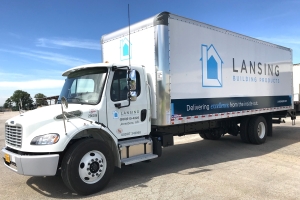
The philosophy in the trucking industry for regional and OTR was always “one driver, one truck.” As with many things in the industry, recent regulatory and economic changes have made that norm less practical for many companies.
Equipment efficiencies and financial incentives are pushing some companies to implement slip seating. There is, understandably, some driver resistance to this new way of doing things. This is why it’s important to understand the pros and cons so you can evaluate whether it’s right for your company.
What Is Slip Seating?
Slip seating is when multiple drivers share a truck. Drivers don’t have a single cab that they are solely responsible for or that is reserved for their use.
In the trucking industry, slip seating has not historically been the norm, especially for regional and OTR drivers. While there are good financial reasons for employers to use it, slip seating often comes at the expense of employee satisfaction.
Pros
Better Equipment Utilization
As a recruiter or fleet manager, you have a responsibility for the overall financial health of your company. From that perspective, slip seating often makes good economic sense.
First and foremost, it allows for greater equipment utilization because you can drastically reduce the amount of time that a truck will sit empty in the yard while its designated driver is not on shift. Slip seating allows a company to make more runs in the same amount of time without buying more equipment.
Tax Incentives
In addition to time efficiencies, there are tax incentives to using slip seating as well. You can take advantage of these incentives if you account for the depreciation of trucks as an asset. According to Duff Swain, president of the consulting firm Trincon Group LLC in a FleetOwner article, trucks can be depreciated over a 3 year period.
The best way to maximize profits while minimizing expenses and taxes is to drive at least 700,000 miles per truck in three years. Realistically, 700,000 miles over three years is not feasible for a single driver. So, to reach optimal mileage, slip seating is a must.
Cons
Driver Dissatisfaction
Perhaps the biggest downside is that many drivers don’t like it. It might be easy to dismiss driver concerns under the pretense that they will soon adapt to new policies. However, think twice before making your decision.
Driver complaints are legitimate and could affect not only company morale and reputation, but also, the company’s bottom line. Driver happiness is a huge driver of retention.
Why are drivers so against it? Drivers who are a part of a company that utilizes slip seating cite messy cabs, the inefficient use of time required to move belongings to and from different cabs, and less well-maintained equipment as their top concerns. In these cases, since no driver views the truck as their own, they may be less likely to treat it with the care and cleanliness they would if a truck was their own.
Maintenance & Health
In addition to driver concerns, employers should consider that slip seating increases the number of miles driven on each truck. As a result, routine maintenance or repairs may come up more frequently.
Health concerns should also be a top consideration, especially in light of Covid-19. Multiple drivers using the same enclosed space in rapid succession means that disinfecting and other health safety protocols should be a high priority before each driver change.
The Bottom Line
There are clear benefits and drawbacks to implementing slip seating in your fleet. Ultimately, it’s a company decision. Also keep in mind that this decision doesn’t have to be all or nothing. Some companies may find it advantageous to use slip seating for some trucks, but not for their entire fleet.
Just keep in mind that it’s very likely that if you implement slip seating, any increased financial gains will be offset by increased driver dissatisfaction. If you still find it viable to go with slip seating, the next question you should ask is “Where can I make that satisfaction up?”
Providing monetary bonuses, implementing recognition/incentive programs, and providing career-building opportunities are just a few ways that companies who use slip seating are still able to have high driver satisfaction. Ultimately, most people are willing to put up with working arrangements that aren’t ideal if they like their job and the people they work for.

 Comprehensive CDL Recruitment Solutions
Comprehensive CDL Recruitment Solutions
 April Smith is the Recruiting Manager with Drive My Way client,
April Smith is the Recruiting Manager with Drive My Way client,  Lansing Building Products Partners with Drive My Way for Success
Lansing Building Products Partners with Drive My Way for Success














 Drive My Way announced that
Drive My Way announced that 



 Many trucking regulations experts are strongly opposed to the PRO Act, but there is an underlying problem that this Act brings to the surface. The PRO Act tries to prevent companies from “employing” workers without offering benefits AKA
Many trucking regulations experts are strongly opposed to the PRO Act, but there is an underlying problem that this Act brings to the surface. The PRO Act tries to prevent companies from “employing” workers without offering benefits AKA 




 These are often two of the most important factors for regional drivers. Many regional drivers prioritize more home time and are willing to take a slight pay cut if they were at an OTR position. Regional jobs can be the
These are often two of the most important factors for regional drivers. Many regional drivers prioritize more home time and are willing to take a slight pay cut if they were at an OTR position. Regional jobs can be the  While they don’t spend weeks on the road at a time, regional drivers still spend a lot of time in their cab. That means that
While they don’t spend weeks on the road at a time, regional drivers still spend a lot of time in their cab. That means that 



